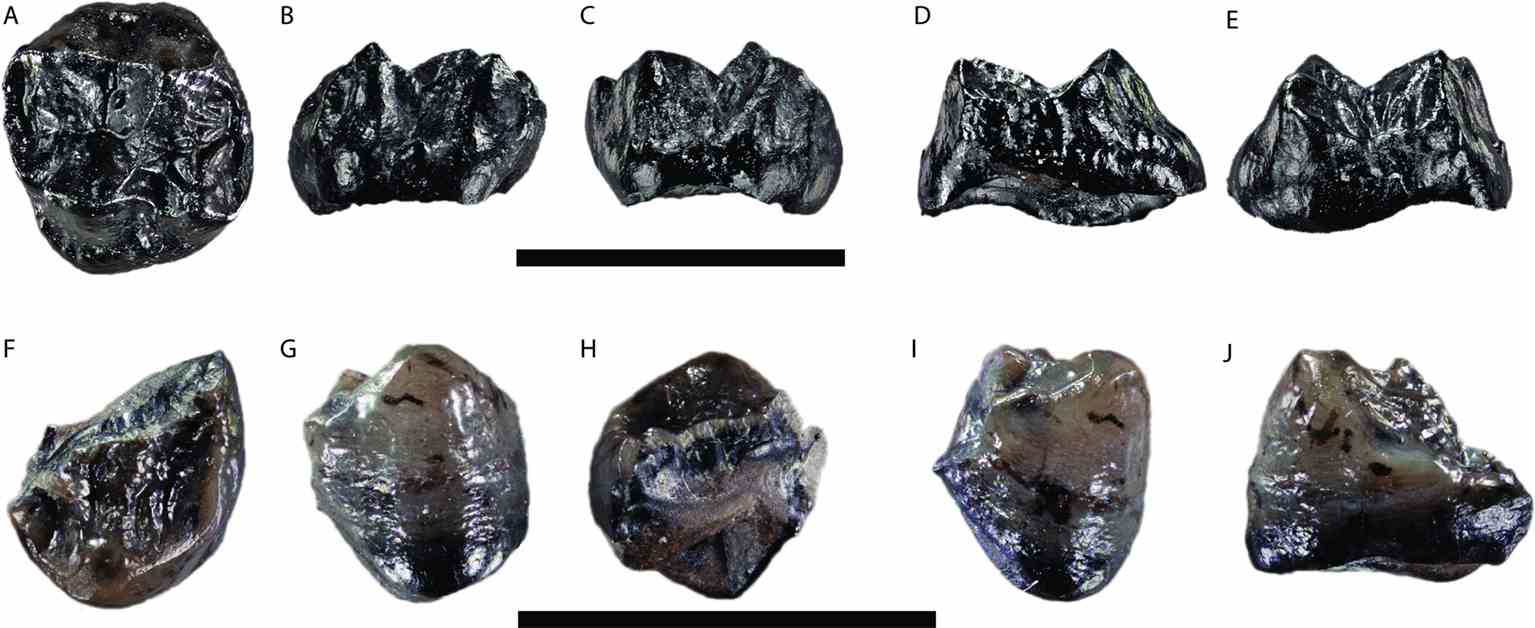Discovery of a new species of great ape that lived 11.6 million years ago
Researchers conducting excavations in the fossil site of Hammerschmiede in Bavaria, Germany, have discovered a new species of great ape that would have lived in Europe 11.6 million years ago. Named Buronius manfredschmidi, it primarily fed on leaves and weighed only about 10 kilograms, making it the smallest known great ape to date.
Around 15 million years ago, during the middle Miocene, hominoids (or great apes) became more abundant in Europe, while becoming scarce in Africa. However, despite their abundance, different hominoid taxa never coexisted in the same region or ecosystem. They could, in rare cases, coexist with Pliopithecoids, a superfamily of “Old World monkeys” (or Catarrhines) that inhabited Asia and Europe during the Miocene. Although they were once widespread, they quickly disappeared and have no living descendants. However, no locality in Europe has housed more than one species of hominoids until now.
On the other hand, the Hammerschmiede site is an incredibly rich fossil site. The stratigraphic layer called HAM 5 contains a great taxonomic diversity ranging from plants to mollusks, mammals, and birds. So far, about 40,000 fossils of 150 vertebrate species have been found there. It is also famous for having housed the remains dating back 11.6 million years of several Danuvius guggenmosi, the first bipedal great apes.
Recently, researchers from the University of Tübingen (Germany) and the University of Toronto (Canada) unearthed two primate teeth and a kneecap at the same site. Although discovered in the same stratigraphic layer as D. guggenmosi, these bones were too small and morphologically different to be attributed to the same taxon. Experts have concluded that it is a completely new species of hominoid, which they named Buronius manfredschmidi.
While it was believed that the site was not an exception, it would have housed two hominoid taxa coexisting in the same ecosystem. “The deposition conditions allow us to conclude that the two apes lived simultaneously in the same ecosystem,” explained Thomas Lechner, one of the excavation leaders at the University of Tübingen.
The new great ape from Hammerschmiede, Buronius manfredschmidi, with a body weight of about 10 kg, is not only the smallest known great ape but also represents the first case of syntopy [species found in the same geographically restricted site and period] of hominoids in Europe, the researchers wrote in their study published in the journal PLOS ONE.
The fragments of fossils analyzed by the researchers include two molars about 7 millimeters long and a kneecap 16 centimeters in diameter. According to experts, their size suggests that B. manfredschmidi weighed only about 10 kilograms, comparable to siamangs, small apes related to gibbons in Southeast Asia. For comparison, the bonobo (the previous smallest known great ape) weighs about 30 kilograms, while the gorilla (the largest known ape) weighs up to 200 kilograms. It is also smaller than D. guggenmosi, which weighs between 15 and 46 kilograms.
In comparing the thickness of the tooth enamel of the two hominoids, they found that B. manfredschmidi’s enamel is thinner, suggesting a diet based on easy-to-chew foods like leaves. Its thinner and smoother enamel was notably similar to that of gorillas, which are exclusively herbivorous. In contrast, D. guggenmosi’s enamel is comparable to that of humans, indicating that they were also omnivores.
The structure of B. manfredschmidi’s kneecap also indicates that it was an excellent climber, like arboreal monkeys, which aligns with its diet. “The kneecap of B. manfredschmidi is thicker and more asymmetrical than that of Danuvius,” explained Madelaine Böhme, the study’s lead author. “This could be explained by differences in thigh muscles. It is possible that Buronius was better adapted to climbing trees,” she said.
Although coexisting in the same region, these characteristics suggest that Buronius had a completely different lifestyle from Danuvius. According to the researchers, these differences likely allowed the two species to share the same habitat without competing for resources — similar to gibbons and orangutans today, which share the same ecosystem in Borneo and Sumatra.
However, experts commenting on the study believe that three fossil fragments are not enough to affirm that it is truly a new species, especially since they are not well-preserved enough to allow for DNA analysis. They could, for example, belong to young Danuvius or pliopithecoids. Nevertheless, the hypothesis of the first hominoid syntopy in Europe encourages further research and the reexamination of other similar sites.
Source: PLOS ONE



